Teledyne T200H-M User Manual

INSTRUCTION MANUAL
MODEL T200H/M
NITROGEN OXIDES ANALYZER
© TELEDYNE ADVANCED POLLUTION INSTRUMENTATION
9480 CARROLL PARK DRIVE SAN DIEGO, CA 92121-5201 USA
Toll-free Phone: |
800-324-5190 |
Phone: |
858-657-9800 |
Fax: |
858-657-9816 |
Email: |
api-sales@teledyne.com |
Website: |
http://www.teledyne-api.com/ |
Copyright 2011-2012 |
07270B DCN6512 |
Teledyne Advanced Pollution Instrumentation |
20 June 2012 |

ABOUT TELEDYNE ADVANCED POLLUTION INSTRUMENTATION (TAPI)
Teledyne Advanced Pollution Instrumentation, Inc. (TAPI) is a worldwide market leader in the design and manufacture of precision analytical instrumentation used for air quality monitoring, continuous emissions monitoring, and specialty process monitoring applications. Founded in San Diego, California, in 1988, TAPI introduced a complete line of Air Quality Monitoring (AQM) instrumentation, which comply with the United States Environmental Protection Administration (EPA) and international requirements for the measurement of criteria pollutants, including CO, SO2, NOX and Ozone.
Since 1988 TAPI has combined state-of-the-art technology, proven measuring principles, stringent quality assurance systems and world class after-sales support to deliver the best products and customer satisfaction in the business.
For further information on our company, our complete range of products, and the applications that they serve, please visit www.teledyne-api.com or contact sales@teledyne-api.com.
NOTICE OF COPYRIGHT
© 2011-2012 Teledyne Advanced Pollution Instrumentation. All rights reserved.
TRADEMARKS
All trademarks, registered trademarks, brand names or product names appearing in this document are the property of their respective owners and are used herein for identification purposes only.
i

Teledyne API - Model T200H/T200M Operation Manual
This page intentionally left blank.
ii
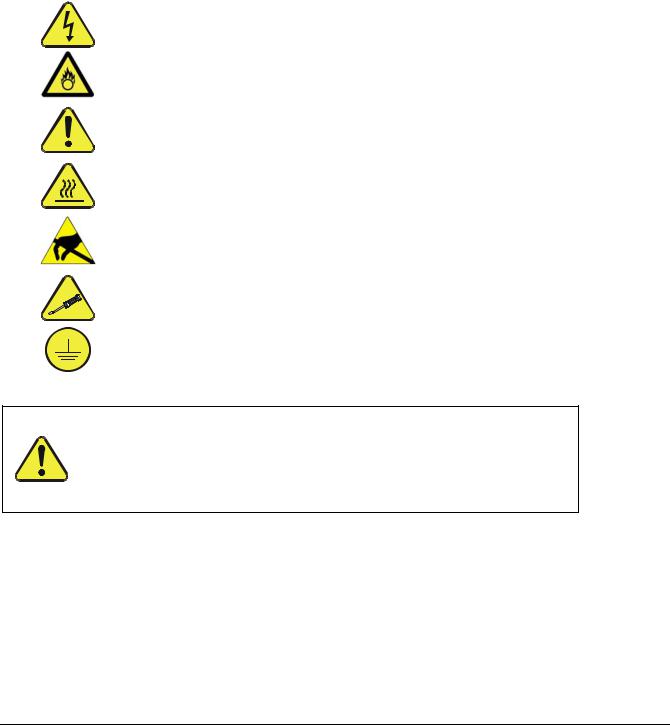
SAFETY MESSAGES
Important safety messages are provided throughout this manual for the purpose of avoiding personal injury or instrument damage. Please read these messages carefully. Each safety message is associated with a safety alert symbol, and are placed throughout this manual; the safety symbols are also located inside the instrument. It is imperative that you pay close attention to these messages, the descriptions of which are as follows:
WARNING: Electrical Shock Hazard
HAZARD: Strong oxidizer
GENERAL WARNING/CAUTION: Read the accompanying message for specific information.
CAUTION: Hot Surface Warning
Do Not Touch: Touching some parts of the instrument without protection or proper tools could result in damage to the part(s) and/or the instrument.
Technician Symbol: All operations marked with this symbol are to be performed by qualified maintenance personnel only.
Electrical Ground: This symbol inside the instrument marks the central safety grounding point for the instrument.
CAUTION
This instrument should only be used for the purpose and in the manner described in this manual. If you use this instrument in a manner other than that for which it was intended, unpredictable behavior could ensue with possible hazardous consequences.
NEVER use any gas analyzer to sample combustible gas(es)!
For Technical Assistance regarding the use and maintenance of this instrument or any other Teledyne API product, contact Teledyne API’s Technical Support Department:
Telephone: 800-324-5190
Email: sda_techsupport@teledyne.com
or access any of the service options on our website at http://www.teledyne-api.com/
iii
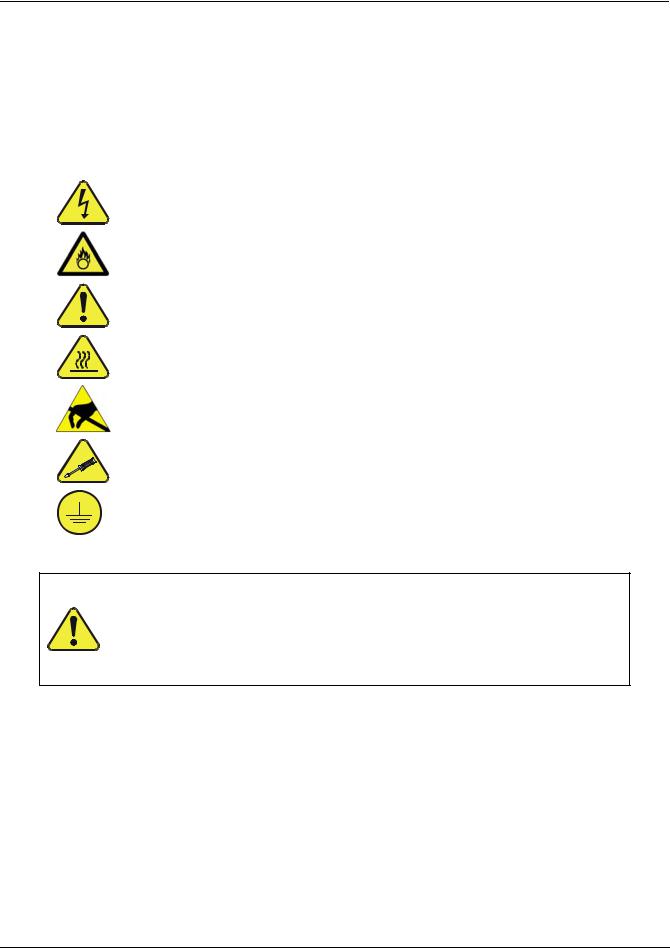
Teledyne API - Model T200H/T200M Operation Manual
CONSIGNES DE SÉCURITÉ
Des consignes de sécurité importantes sont fournies tout au long du présent manuel dans le but d’éviter des blessures corporelles ou d’endommager les instruments. Veuillez lire attentivement ces consignes. Chaque consigne de sécurité est représentée par un pictogramme d’alerte de sécurité; ces pictogrammes se retrouvent dans ce manuel et à l’intérieur des instruments. Les symboles correspondent aux consignes suivantes :
AVERTISSEMENT : Risque de choc électrique
DANGER : Oxydant puissant
AVERTISSEMENT GÉNÉRAL / MISE EN GARDE : Lire la consigne complémentaire pour des renseignements spécifiques
MISE EN GARDE : Surface chaude
Ne pas toucher : Toucher à certaines parties de l’instrument sans protection ou sans les outils appropriés pourrait entraîner des dommages aux pièces ou à l’instrument.
Pictogramme « technicien » : Toutes les opérations portant ce symbole doivent être effectuées uniquement par du personnel de maintenance qualifié.
Mise à la terre : Ce symbole à l’intérieur de l’instrument détermine le point central de la mise à la terre sécuritaire de l’instrument.
MISE EN GARDE
Cet instrument doit être utilisé aux fins décrites et de la manière décrite dans ce manuel. Si vous utilisez cet instrument d’une autre manière que celle pour laquelle il a été prévu, l’instrument pourrait se comporter de façon imprévisible et entraîner des conséquences dangereuses.
NE JAMAIS utiliser un analyseur de gaz pour échantillonner des gaz combustibles!
iv
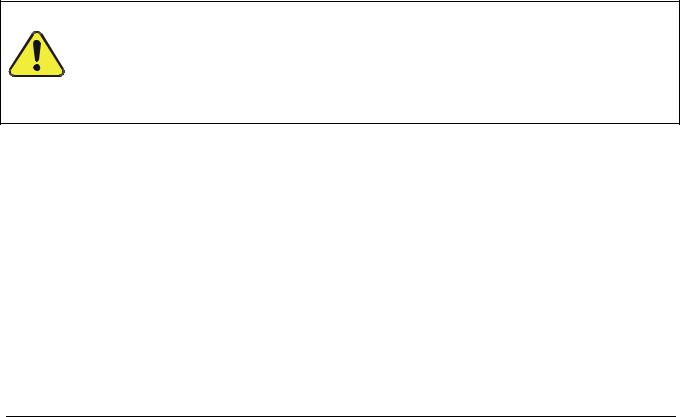
WARRANTY
WARRANTY POLICY (02024 F)
Teledyne Advanced Pollution Instrumentation (TAPI), a business unit of Teledyne Instruments, Inc., provides that:
Prior to shipment, TAPI equipment is thoroughly inspected and tested. Should equipment failure occur, TAPI assures its customers that prompt service and support will be available.
COVERAGE
After the warranty period and throughout the equipment lifetime, TAPI stands ready to provide on-site or in-plant service at reasonable rates similar to those of other manufacturers in the industry. All maintenance and the first level of field troubleshooting are to be performed by the customer.
NON-TAPI MANUFACTURED EQUIPMENT
Equipment provided but not manufactured by TAPI is warranted and will be repaired to the extent and according to the current terms and conditions of the respective equipment manufacturer’s warranty.
PRODUCT RETURN
All units or components returned to Teledyne API should be properly packed for handling and returned freight prepaid to the nearest designated Service Center. After the repair, the equipment will be returned, freight prepaid.
The complete Terms and Conditions of Sale can be reviewed at http://www.teledyneapi.com/terms_and_conditions.asp
CAUTION – Avoid Warranty Invalidation
Failure to comply with proper anti-Electro-Static Discharge (ESD) handling and packing instructions and Return Merchandise Authorization (RMA) procedures when returning parts for repair or calibration may void your warranty. For anti-ESD handling and packing instructions please refer to “Packing Components for Return to Teledyne API’s Customer Service” in the Primer on ElectroStatic Discharge section of this manual, and for RMA procedures please refer to our Website at http://www.teledyne-api.com under Customer Support > Return Authorization.
v

Teledyne API - Model T200H/T200M Operation Manual
This page intentionally left blank.
vi
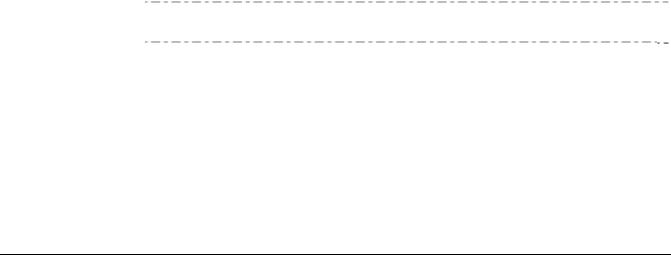
ABOUT THIS MANUAL
This manual is comprised of multiple documents, in PDF format, as listed below.
Part No. |
Rev |
|
Name/Description |
|
|
|
|
07270 |
B |
T200H/M Operation Manual |
|
|
|
|
|
05147 |
H |
Menu Trees and Software Documentation (inserted as Appendix A in this manual) |
|
|
|
|
|
07351 |
A |
Spare Parts List |
- T200H (located in Appendix B of this manual) |
|
|
|
|
07367 |
A |
Spare Parts List |
- T200M (located in Appendix B of this manual)t |
|
|
|
|
05149 |
B |
Repair Request Form (inserted as Appendix C in this manual) |
|
|
|
|
|
|
|
|
Documents included in Appendix D: |
|
|
|
|
0691101 |
A |
Interconnect Wire List |
|
|
|
|
|
06911 |
A |
Interconnect Wiring Diagram |
|
|
|
|
|
01669 |
G |
PCA 016680300, Ozone generator board |
|
|
|
|
|
01840 |
B |
PCA Thermo-electric cooler board |
|
|
|
|
|
03632 |
A |
PCA 03631, 0-20mA Driver |
|
|
|
|
|
03956 |
A |
PCA 039550200, Relay Board |
|
|
|
|
|
04354 |
D |
PCA 04003, Pressure/Flow Transducer Interface |
|
|
|
|
|
04181 |
H |
PCA 041800200, PMT pre-amplifier board |
|
|
|
|
|
04468 |
B |
PCA, 04467, Analog Output |
|
|
|
|
|
01840 |
B |
SCH, PCA 05802, MOTHERBOARD, GEN-5 |
|
|
|
|
|
03632 |
D |
SCH, PCA 06697, INTRFC, LCD TCH SCRN, |
|
|
|
|
|
03956 |
B |
SCH, LVDS TRANSMITTER BOARD |
|
|
|
|
|
06731 |
A |
SCH, AUXILLIARY-I/O BOARD |
|
|
|
|
|
Note |
We recommend that all users read this manual in its entirety before |
|
operating the instrument. |
vii

Teledyne API - Model T200H/T200M Operation Manual
This page intentionally left blank.
viii

REVISION HISTORY
This section provides information regarding changes to this manual.
T200H/T200M Operation Manual PN 07270
Date |
Rev |
DCN |
Change Summary |
2012 June 20 |
B |
6512 |
Administrative updates |
2011 March 04 |
A |
5999 |
Initial Release |
ix

Teledyne API - Model T200H/T200M Operation Manual
This page intentionally left blank.
x

TABLE OF CONTENTS |
|
ABOUT TELEDYNE ADVANCED POLLUTION INSTRUMENTATION (TAPI) |
............................................................................... i |
SAFETY MESSAGES .................................................................................................................................................................. |
iii |
CONSIGNES DE SÉCURITÉ...................................................................................................................................................... |
iv |
Warranty ...................................................................................................................................................................................... |
v |
About This Manual ...................................................................................................................................................................... |
vii |
Revision History .......................................................................................................................................................................... |
ix |
Table of Contents........................................................................................................................................................................ |
xi |
List of Figures............................................................................................................................................................................. |
xiv |
List of Tables.............................................................................................................................................................................. |
xvi |
LIST OF APPENDICES ............................................................................................................................................................ |
xvii |
1. Introduction, Features, and Options ....................................................................................................................................... |
19 |
1.1. Overview ........................................................................................................................................................................ |
19 |
1.2. Features ......................................................................................................................................................................... |
19 |
1.3. Using This Manual.......................................................................................................................................................... |
19 |
1.4. Options ........................................................................................................................................................................... |
20 |
2. Specifications and Approvals ................................................................................................................................................. |
23 |
2.1. T200H/M Operating Specifications................................................................................................................................. |
23 |
2.2. Approvals and Certifications........................................................................................................................................... |
24 |
2.2.1. Safety ..................................................................................................................................................................... |
24 |
2.2.2. EMC........................................................................................................................................................................ |
24 |
3. Getting Started ....................................................................................................................................................................... |
25 |
3.1. Unpacking and Initial Setup............................................................................................................................................ |
25 |
3.2. Ventilation Clearance ..................................................................................................................................................... |
26 |
3.3. T200H/M Layout............................................................................................................................................................. |
26 |
3.4. Electrical Connections.................................................................................................................................................... |
32 |
3.4.1. Power Connection .................................................................................................................................................. |
32 |
3.4.2. Analog Inputs (Option 64) Connections .................................................................................................................. |
33 |
3.4.3. Analog Output Connections.................................................................................................................................... |
33 |
3.4.4. Connecting the Status Outputs............................................................................................................................... |
34 |
3.4.5. Current Loop Analog Outputs (OPT 41) Setup ....................................................................................................... |
36 |
3.4.6. Connecting the Control Inputs ................................................................................................................................ |
38 |
3.4.7. Connecting the Alarm Relay Option (OPT 61)........................................................................................................ |
39 |
3.4.8. Connecting the Communications Ports................................................................................................................... |
40 |
3.5. Pneumatic Connections ................................................................................................................................................. |
42 |
3.5.1. About Zero Air and Calibration (Span) Gases ........................................................................................................ |
42 |
3.5.2. Pneumatic Connections to T200H/M Basic Configuration ...................................................................................... |
44 |
3.5.3. Connections with Internal Valve Options Installed.................................................................................................. |
49 |
3.6. Initial Operation .............................................................................................................................................................. |
59 |
3.6.1. Startup .................................................................................................................................................................... |
59 |
3.6.2. Warning Messages ................................................................................................................................................. |
59 |
3.6.3. Functional Check.................................................................................................................................................... |
60 |
3.7. Calibration ...................................................................................................................................................................... |
61 |
3.7.1. Basic NOx Calibration Procedure............................................................................................................................ |
61 |
3.7.2. Basic O2 Sensor Calibration Procedure.................................................................................................................. |
66 |
4. Operating Instructions ............................................................................................................................................................ |
71 |
4.1. Overview of Operating Modes ........................................................................................................................................ |
71 |
4.2. Sample Mode ................................................................................................................................................................. |
73 |
4.2.1. Test Functions ........................................................................................................................................................ |
73 |
4.2.2. Warning Messages ................................................................................................................................................. |
75 |
4.3. Calibration Mode ............................................................................................................................................................ |
77 |
4.3.1. Calibration Functions .............................................................................................................................................. |
77 |
4.4. SETUP MODE................................................................................................................................................................ |
77 |
4.5. SETUP CFG: Viewing the Analyzer’s Configuration Information ............................................................................... |
78 |
4.6. SETUP ACAL: Automatic Calibration......................................................................................................................... |
79 |
4.7. SETUP DAS - Using the Data Acquisition System (DAS)......................................................................................... |
80 |
4.7.1. DAS Structure......................................................................................................................................................... |
81 |
4.7.2. Default DAS Channels............................................................................................................................................ |
83 |
4.7.3. Remote DAS Configuration .................................................................................................................................... |
96 |
xi

Table of Contents |
Teledyne API - Model T200H/T200M Operation Manual |
|
4.8. SETUP RNGE: Range Units and Dilution Configuration............................................................................................ |
97 |
|
4.8.1. Range Units............................................................................................................................................................ |
|
97 |
4.8.2. Dilution Ratio .......................................................................................................................................................... |
|
98 |
4.9. SETUP PASS: Password Feature ............................................................................................................................. |
|
99 |
4.10. SETUP CLK: Setting the Internal Time-of-Day Clock ............................................................................................ |
101 |
|
4.11. SETUP MORE COMM: Setting Up the Analyser’s Communication Ports ......................................................... |
103 |
|
4.11.1. DTE and DCE Communication ........................................................................................................................... |
|
103 |
4.11.2. COM Port Default Settings ................................................................................................................................. |
|
103 |
4.11.3. Communication Modes, Baud Rate and Port Testing......................................................................................... |
104 |
|
4.11.4. Analyzer ID ......................................................................................................................................................... |
|
108 |
4.11.5. RS-232 COM Port Cable Connections ............................................................................................................... |
|
109 |
4.11.6. RS-485 Configuration of COM2.......................................................................................................................... |
|
111 |
4.11.7. Ethernet Interface Configuration......................................................................................................................... |
|
111 |
4.11.8. USB Port Setup .................................................................................................................................................. |
|
117 |
4.11.9. Multidrop RS-232 Set Up.................................................................................................................................... |
|
119 |
4.11.10. MODBUS SETUP............................................................................................................................................. |
|
122 |
4.12. SETUP MORE VARS: Internal Variables (VARS) ............................................................................................. |
124 |
|
4.12.1. Setting the Gas Measurement Mode .................................................................................................................. |
|
126 |
4.13. SETUP MORE DIAG: Diagnostics MENU ........................................................................................................ |
|
127 |
4.13.1. Accessing the Diagnostic Features..................................................................................................................... |
|
128 |
4.13.2. Signal I/O............................................................................................................................................................ |
|
128 |
4.13.3. Analog Output Step Test .................................................................................................................................... |
|
130 |
4.13.4. ANALOG OUTPUTS and Reporting Ranges...................................................................................................... |
|
131 |
4.13.5. ANALOG I/O CONFIGURATION........................................................................................................................ |
|
134 |
4.13.6. ANALOG OUTPUT CALIBRATION .................................................................................................................... |
|
148 |
4.13.7. OTHER DIAG MENU FUNCTIONS .................................................................................................................... |
|
158 |
4.14. SETUP – ALRM: Using the optional Gas Concentration Alarms (OPT 67) ................................................................ |
166 |
|
4.15. Remote Operation ...................................................................................................................................................... |
|
167 |
4.15.1. Remote Operation Using the External Digital I/O ............................................................................................... |
|
167 |
4.15.2. Remote Operation .............................................................................................................................................. |
|
169 |
4.15.3. Additional Communications Documentation ....................................................................................................... |
|
176 |
4.15.4. Using the T200H/M with a Hessen Protocol Network ......................................................................................... |
176 |
|
5. Calibration Procedures......................................................................................................................................................... |
|
183 |
5.1.1. Interferents for NOX Measurements...................................................................................................................... |
|
183 |
5.2. Calibration Preparations ............................................................................................................................................... |
|
184 |
5.2.1. Required Equipment, Supplies, and Expendables................................................................................................ |
|
184 |
5.2.2. Zero Air................................................................................................................................................................. |
|
184 |
5.2.3. Span Calibration Gas Standards & Traceability.................................................................................................... |
|
185 |
5.2.4. Data Recording Devices ....................................................................................................................................... |
|
186 |
5.2.5. NO2 Conversion Efficiency (CE) ........................................................................................................................... |
|
186 |
5.3. Manual Calibration ....................................................................................................................................................... |
|
191 |
5.4. Calibration Checks ....................................................................................................................................................... |
|
195 |
5.5. Manual Calibration with Zero/Span Valves................................................................................................................... |
|
196 |
5.6. Calibration Checks with Zero/Span Valves................................................................................................................... |
|
199 |
5.7. Calibration With Remote Contact Closures .................................................................................................................. |
|
200 |
5.8. Automatic Calibration (AutoCal) ................................................................................................................................... |
|
201 |
5.9. Calibration Quality Analysis.......................................................................................................................................... |
|
204 |
6. Instrument Maintenance....................................................................................................................................................... |
|
205 |
6.1. Maintenance Schedule................................................................................................................................................. |
|
205 |
6.2. Predictive Diagnostics .................................................................................................................................................. |
|
207 |
6.3. Maintenance Procedures.............................................................................................................................................. |
|
207 |
6.3.1. Changing the Sample Particulate Filter ................................................................................................................ |
|
207 |
6.3.2. Changing the O3 Dryer Particulate Filter............................................................................................................... |
|
209 |
6.3.3. Maintaining the External Sample Pump................................................................................................................ |
|
210 |
6.3.4. Changing the NO2 converter................................................................................................................................. |
|
211 |
6.3.5. Cleaning the Reaction Cell ................................................................................................................................... |
|
212 |
6.3.6. Changing Critical Flow Orifices............................................................................................................................. |
|
214 |
6.3.7. Checking for Light Leaks ...................................................................................................................................... |
|
215 |
7. Troubleshooting & Repair .................................................................................................................................................... |
|
217 |
7.1. General Troubleshooting.............................................................................................................................................. |
|
217 |
7.1.1. Fault Diagnosis with Warning Messages .............................................................................................................. |
|
218 |
7.1.2. Fault Diagnosis with Test Functions ..................................................................................................................... |
|
219 |
7.1.3. Using the Diagnostic Signal I/O Function ............................................................................................................. |
|
220 |
7.1.4. Status LED’s......................................................................................................................................................... |
|
222 |
7.2. Gas Flow Problems ...................................................................................................................................................... |
|
225 |
xii

Teledyne API - Model T200H/T200M Operation Manual |
Table of Contents |
7.2.1. T200H Internal Gas Flow Diagrams...................................................................................................................... |
226 |
7.2.2. T200M Internal Gas Flow Diagrams ..................................................................................................................... |
229 |
7.2.3. Zero or Low Flow Problems.................................................................................................................................. |
231 |
7.2.4. High Flow.............................................................................................................................................................. |
233 |
7.2.5. Sample Flow is Zero or Low But Analyzer Reports Correct Flow ......................................................................... |
233 |
7.3. Calibration Problems .................................................................................................................................................... |
234 |
7.3.1. Negative Concentrations ...................................................................................................................................... |
234 |
7.3.2. No Response........................................................................................................................................................ |
234 |
7.3.3. Unstable Zero and Span....................................................................................................................................... |
235 |
7.3.4. Inability to Span - No SPAN Key .......................................................................................................................... |
235 |
7.3.5. Inability to Zero - No ZERO Button ....................................................................................................................... |
236 |
7.3.6. Non-Linear Response........................................................................................................................................... |
236 |
7.3.7. Discrepancy Between Analog Output and Display ............................................................................................... |
237 |
7.3.8. Discrepancy between NO and NOX slopes........................................................................................................... |
237 |
7.4. Other Performance Problems....................................................................................................................................... |
237 |
7.4.1. Excessive noise.................................................................................................................................................... |
238 |
7.4.2. Slow Response..................................................................................................................................................... |
238 |
7.4.3. Auto-zero Warnings .............................................................................................................................................. |
238 |
7.5. Subsystem Checkout ................................................................................................................................................... |
239 |
7.5.1. Simple Leak Check using Vacuum and Pump...................................................................................................... |
239 |
7.5.2. Detailed Leak Check Using Pressure ................................................................................................................... |
239 |
7.5.3. Performing a Sample Flow Check ........................................................................................................................ |
240 |
7.5.4. AC Power Configuration ....................................................................................................................................... |
241 |
7.5.5. DC Power Supply Test Points .............................................................................................................................. |
245 |
7.5.6. I2C Bus ................................................................................................................................................................. |
245 |
7.5.7. Touch Screen Interface ........................................................................................................................................ |
246 |
7.5.8. LCD Display Module ............................................................................................................................................. |
246 |
7.5.9. General Relay Board Diagnostics......................................................................................................................... |
246 |
7.5.10. Motherboard ....................................................................................................................................................... |
247 |
7.5.11. CPU .................................................................................................................................................................... |
249 |
7.5.12. RS-232 Communication...................................................................................................................................... |
250 |
7.5.13. PMT Sensor........................................................................................................................................................ |
251 |
7.5.14. PMT Preamplifier Board ..................................................................................................................................... |
251 |
7.5.15. High Voltage Power Supply ................................................................................................................................ |
251 |
7.5.16. Pneumatic Sensor Assembly.............................................................................................................................. |
252 |
7.5.17. NO2 Converter .................................................................................................................................................... |
253 |
7.5.18. O3 Generator ...................................................................................................................................................... |
255 |
7.5.19. Box Temperature................................................................................................................................................ |
255 |
7.5.20. PMT Temperature............................................................................................................................................... |
255 |
7.6. Repair Procedures ....................................................................................................................................................... |
256 |
7.6.1. Disk-on-Module Replacement .............................................................................................................................. |
256 |
7.6.2. O3 Generator Replacement .................................................................................................................................. |
257 |
7.6.3. Sample and Ozone Dryer Replacement ............................................................................................................... |
257 |
7.6.4. PMT Sensor Hardware Calibration ....................................................................................................................... |
258 |
7.6.5. Replacing the PMT, HVPS or TEC ....................................................................................................................... |
260 |
7.7. Removing / Replacing the Relay PCA from the Instrument.......................................................................................... |
263 |
7.8. Frequently Asked Questions ........................................................................................................................................ |
264 |
7.9. Technical Assistance.................................................................................................................................................... |
265 |
8. Principles of Operation......................................................................................................................................................... |
267 |
8.1. Measurement Principle................................................................................................................................................. |
267 |
8.1.1. Chemiluminescence ............................................................................................................................................. |
267 |
8.1.2. NOX and NO2 Determination ................................................................................................................................. |
269 |
8.2. Chemiluminescence Detection ..................................................................................................................................... |
270 |
8.2.1. The Photo Multiplier Tube..................................................................................................................................... |
270 |
8.2.2. Optical Filter ......................................................................................................................................................... |
270 |
8.2.3. Auto Zero.............................................................................................................................................................. |
271 |
8.2.4. Measurement Interferences.................................................................................................................................. |
272 |
8.3. Pneumatic Operation.................................................................................................................................................... |
274 |
8.3.1. Pump and Exhaust Manifold................................................................................................................................. |
274 |
8.3.2. Sample Gas Flow ................................................................................................................................................. |
275 |
8.3.3. Flow Rate Control - Critical Flow Orifices ............................................................................................................. |
276 |
8.3.4. Sample Particulate Filter....................................................................................................................................... |
280 |
8.3.5. Ozone Gas Air Flow.............................................................................................................................................. |
281 |
8.3.6. O3 Generator ........................................................................................................................................................ |
282 |
8.3.7. Perma Pure® Dryer ............................................................................................................................................... |
283 |
xiii

Table of Contents |
Teledyne API - Model T200H/T200M Operation Manual |
|
8.3.8. Ozone Supply Air Filter......................................................................................................................................... |
|
285 |
8.3.9. Ozone Scrubber ................................................................................................................................................... |
|
285 |
8.3.10. Pneumatic Sensors............................................................................................................................................. |
|
286 |
8.3.11. Dilution Manifold ................................................................................................................................................. |
|
287 |
8.4. Oxygen Sensor (OPT 65A) Principles of Operation ..................................................................................................... |
|
288 |
8.4.1. Paramagnetic Measurement of O2........................................................................................................................ |
|
288 |
8.4.2. Operation Within the T200H/M Analyzer .............................................................................................................. |
|
289 |
8.4.3. Pneumatic Operation of the O2 Sensor................................................................................................................. |
|
289 |
8.5. Electronic Operation..................................................................................................................................................... |
|
290 |
8.5.1. CPU ...................................................................................................................................................................... |
|
291 |
8.5.2. Sensor Module, Reaction Cell .............................................................................................................................. |
|
292 |
8.5.3. Photo Multiplier Tube (PMT)................................................................................................................................. |
|
293 |
8.5.4. PMT Cooling System ............................................................................................................................................ |
|
295 |
8.5.5. PMT Preamplifier.................................................................................................................................................. |
|
295 |
8.5.6. Pneumatic Sensor Board...................................................................................................................................... |
|
297 |
8.5.7. Relay Board.......................................................................................................................................................... |
|
297 |
8.5.8. Status LEDs & Watch Dog Circuitry...................................................................................................................... |
|
301 |
8.5.9. Motherboard ......................................................................................................................................................... |
|
302 |
8.5.10. Analog Outputs................................................................................................................................................... |
|
304 |
8.5.11. External Digital I/O.............................................................................................................................................. |
|
304 |
8.5.12. I2C Data Bus ....................................................................................................................................................... |
|
304 |
8.5.13. Power-up Circuit ................................................................................................................................................. |
|
304 |
8.6. Power Distribution & Circuit Breaker ............................................................................................................................ |
|
305 |
8.7. Front Panel/Display Interface Electronics..................................................................................................................... |
|
306 |
8.7.1. Front Panel Interface PCA.................................................................................................................................... |
|
306 |
8.8. Software Operation ...................................................................................................................................................... |
|
307 |
8.8.1. Adaptive Filter....................................................................................................................................................... |
|
308 |
8.8.2. Calibration - Slope and Offset............................................................................................................................... |
|
308 |
8.8.3. Temperature/Pressure Compensation (TPC) ....................................................................................................... |
|
309 |
8.8.4. NO2 Converter Efficiency Compensation.............................................................................................................. |
|
310 |
8.8.5. Internal Data Acquisition System (DAS) ............................................................................................................... |
|
310 |
9. A Primer on Electro-Static Discharge................................................................................................................................... |
|
311 |
9.1. How Static Charges are Created.................................................................................................................................. |
|
311 |
9.2. How Electro-Static Charges Cause Damage................................................................................................................ |
|
312 |
9.3. Common Myths About ESD Damage ........................................................................................................................... |
|
313 |
9.4. Basic Principles of Static Control.................................................................................................................................. |
|
314 |
9.4.1. General Rules....................................................................................................................................................... |
|
314 |
9.4.2. Basic anti-ESD Procedures for Analyzer Repair and Maintenance ...................................................................... |
315 |
|
Glossary................................................................................................................................................................................... |
|
319 |
LIST OF FIGURES |
|
|
Figure 3-1: |
Front Panel .................................................................................................................................. |
27 |
Figure 3-2: |
Display Screen and Touch Control .............................................................................................. |
27 |
Figure 3-3: |
Display/Touch Control Screen Mapped to Menu Charts ............................................................. |
29 |
Figure 3-4: |
T200H/M Rear Panel Layout ....................................................................................................... |
30 |
Figure 3-5: |
T200H/M Internal Layout ............................................................................................................. |
31 |
Figure 3-6: |
Analog In Connector .................................................................................................................... |
33 |
Figure 3-7: |
Analog Output Connector ............................................................................................................ |
34 |
Figure 3-8: |
Status Output Connector ............................................................................................................. |
35 |
Figure 3-9: |
Current Loop Option Installed on the Motherboard ..................................................................... |
36 |
Figure 3-10: |
Control Input Connector............................................................................................................... |
38 |
Figure 3-11: |
Alarm Relay Output Pin Assignments.......................................................................................... |
39 |
Figure 3-12: |
T200H/M Multidrop Card ............................................................................................................. |
41 |
Figure 3-13: |
Pneumatic Connections–Basic Configuration–Using Gas Dilution Calibrator............................. |
44 |
Figure 3-14: |
Pneumatic Connections–Basic Configuration–Using Bottled Span Gas..................................... |
45 |
Figure 3-15: |
T200H Internal Pneumatic Block Diagram - Standard Configuration .......................................... |
47 |
Figure 3-16: |
T200M Internal Pneumatic Block Diagram - Standard Configuration.......................................... |
48 |
Figure 3-17: |
Pneumatic Connections–With Zero/Span Valve Option (50A) .................................................... |
49 |
xiv |
|
|

Teledyne API - Model T200H/T200M Operation Manual |
Table of Contents |
|
Figure 3-18: |
Pneumatic Connections–With 2-Span point Option (50D) –Using Bottled Span Gas................. |
49 |
Figure 3-19: |
T200H – Internal Pneumatics with Ambient Zero-Span Valve Option 50A |
50 |
Figure 3-20: |
T200M – Internal Pneumatics with Ambient Zero-Span Valve Option 50A................................. |
51 |
Figure 3-21: |
T200H - Internal Pneumatics for Zero Scrubber/Dual Pressurized Span, Option ...............50D |
55 |
Figure 3-22: |
T200M - Internal Pneumatics for Zero Scrubber/Dual Pressurized Span, Option ...............50D |
56 |
Figure 3-23: |
T200H – Internal Pneumatics with O2 Sensor Option 65A ......................................................... |
57 |
Figure 3-24: |
T200M – Internal Pneumatics with O2 Sensor Option 65A.......................................................... |
58 |
Figure 3-23: |
O2 Sensor Calibration Set Up ...................................................................................................... |
66 |
Figure 4-1: |
Front Panel Display with “SAMPLE” Indicated in the Mode Field ............................................... |
72 |
Figure 4-2: |
Viewing T200H/M TEST Functions.............................................................................................. |
75 |
Figure 4-3: |
Viewing and Clearing T200H/M WARNING Messages ............................................................... |
76 |
Figure 4-4: |
APICOM Graphical User Interface for Configuring the DAS ....................................................... |
96 |
Figure 4-5: |
Default Pin Assignments for Rear Panel com Port Connectors (RS-232 DCE ...........& DTE) |
109 |
Figure 4-6: |
CPU COM1 & COM2 Connector Pin-Outs in RS-232 mode. ................................................... |
110 |
Figure 4-7: |
COM – LAN / Internet Manual Configuration............................................................................ |
115 |
Figure 4-8: |
Jumper and Cables for Multidrop Mode.................................................................................... |
120 |
Figure 4-9: |
RS-232-Multidrop Host-to-Analyzer Interconnect Diagram ...................................................... |
121 |
Figure 4-10: |
Analog Output Connector Key .................................................................................................. |
131 |
Figure 4-11: |
Setup for Calibrating Analog Outputs ....................................................................................... |
151 |
Figure 4-12: |
Setup for Calibrating Current Outputs ...................................................................................... |
153 |
Figure 4-13: |
Alternative Setup for Calibrating Current Outputs .................................................................... |
154 |
Figure 4-14. |
DIAG – Analog Inputs (Option) Configuration Menu ................................................................ |
157 |
Figure 4-15: |
Status Output Connector .......................................................................................................... |
167 |
Figure 4-16: |
Control Inputs with local 5 V power supply............................................................................... |
169 |
Figure 4-17: |
Control Inputs with external 5 V power supply ......................................................................... |
169 |
Figure 4-18: |
APICOM Remote Control Program Interface ........................................................................... |
175 |
Figure 5-1: |
Gas Supply Setup for Determination of NO2 Conversion Efficiency......................................... |
187 |
Figure 5-2: |
Pneumatic Connections–With Zero/Span Valve Option (50A) ................................................. |
191 |
Figure 5-3: |
Pneumatic Connections–With 2-Span point Option (50D) –Using Bottled ..............Span Gas |
192 |
Figure 5-4: |
Pneumatic Connections–With Zero/Span Valve Option (50) ................................................... |
196 |
Figure 6-1: |
Sample Particulate Filter Assembly.......................................................................................... |
208 |
Figure 6-2: |
Particle Filter on O3 Supply Air Dryer ....................................................................................... |
209 |
Figure 6-3: |
NO2 Converter Assembly.......................................................................................................... |
211 |
Figure 6-4: |
Reaction Cell Assembly............................................................................................................ |
213 |
Figure 6-5: |
Critical Flow Orifice Assembly .................................................................................................. |
214 |
Figure 7-1: |
Viewing and Clearing Warning Messages................................................................................ |
219 |
Figure 7-2: |
Switching Signal I/O Functions ................................................................................................. |
221 |
Figure 7-3: |
Motherboard Watchdog Status Indicator .................................................................................. |
222 |
Figure 7-4: |
Relay Board PCA...................................................................................................................... |
223 |
Figure 7-5: |
T200H – Basic Internal Gas Flow ............................................................................................. |
226 |
Figure 7-6: |
T200H – Internal Gas Flow with Ambient Zero Span, OPT 50A .............................................. |
227 |
Figure 7-7: |
T200H – Internal Gas Flow with O2 Sensor, OPT 65A............................................................. |
228 |
Figure 7-8: |
T200M – Basic Internal Gas Flow............................................................................................. |
229 |
Figure 7-9: |
T200M – Internal Gas Flow with Ambient Zero Span, OPT 50A.............................................. |
230 |
Figure 7-10: |
T200M – Internal Gas Flow with O2 Sensor, OPT 65A ............................................................ |
231 |
Figure 7-11: |
Location of AC power Configuration Jumpers .......................................................................... |
241 |
Figure 7-12: |
Pump AC Power Jumpers (JP7)............................................................................................... |
242 |
Figure 7-13: |
Typical Set Up of AC Heater Jumper Set (JP2) ....................................................................... |
243 |
Figure 7-14: |
Typical Set Up of AC Heater Jumper Set (JP6) ....................................................................... |
244 |
Figure 7-15: |
Typical Set Up of Status Output Test ....................................................................................... |
248 |
Figure 7-16: |
Pressure / Flow Sensor Assembly............................................................................................ |
253 |
Figure 7-17: |
Pre-Amplifier Board Layout....................................................................................................... |
259 |
Figure 7-18: |
T200H/M Sensor Assembly ...................................................................................................... |
260 |
Figure 7-19. |
3-Port Reaction Cell Oriented to the Sensor Housing .............................................................. |
261 |
Figure 7-20: |
Relay PCA with AC Relay Retainer In Place............................................................................ |
263 |
Figure 7-21: |
Relay PCA Mounting Screw Locations.................................................................................... |
263 |
Figure 8-1: |
T200H/M Sensitivity Spectrum ................................................................................................. |
268 |
Figure 8-2: |
NO2 Conversion Principle ......................................................................................................... |
269 |
xv

Table of Contents |
Teledyne API - Model T200H/T200M Operation Manual |
|
Figure 8-3: |
Reaction Cell with PMT Tube ................................................................................................... |
270 |
Figure 8-4: |
Reaction Cell During the AutoZero Cycle................................................................................. |
271 |
Figure 8-5: |
External Pump Pack ................................................................................................................. |
275 |
Figure 8-6: |
Location of Gas Flow Control Assemblies for T200H............................................................... |
277 |
Figure 8-7: |
Location of Gas Flow Control Assemblies for T200M .............................................................. |
278 |
Figure 8-8: |
Flow Control Assembly & Critical Flow Orifice ......................................................................... |
279 |
Figure 8-9: |
Ozone Generator Principle ....................................................................................................... |
282 |
Figure 8-10: |
Semi-Permeable Membrane Drying Process ........................................................................... |
283 |
Figure 8-11: |
T200H/M Perma Pure® Dryer ................................................................................................... |
284 |
Figure 8-12: |
Vacuum Manifold ...................................................................................................................... |
286 |
Figure 8-13: |
Dilution Manifold ....................................................................................................................... |
288 |
Figure 8-14: |
Oxygen Sensor - Principle of Operation ................................................................................... |
289 |
Figure 8-15: |
T200H/M Electronic Block Diagram.......................................................................................... |
290 |
Figure 8-16: |
T200H/M CPU Board Annotated .............................................................................................. |
291 |
Figure 8-17: |
PMT Housing Assembly ........................................................................................................... |
293 |
Figure 8-18: |
Basic PMT Design .................................................................................................................... |
294 |
Figure 8-19: |
PMT Cooling System ................................................................................................................ |
295 |
Figure 8-20: |
PMT Preamp Block Diagram .................................................................................................... |
296 |
Figure 8-21: |
Heater Control Loop Block Diagram......................................................................................... |
298 |
Figure 8-22: |
Thermocouple Configuration Jumper (JP5) Pin-Outs............................................................... |
299 |
Figure 8-23: |
Status LED Locations – Relay PCA.......................................................................................... |
301 |
Figure 8-24: |
Power Distribution Block Diagram ............................................................................................ |
305 |
Figure 8-25: |
Front Panel and Display Interface Block Diagram.................................................................... |
306 |
Figure 8-26: |
Basic Software Operation ......................................................................................................... |
307 |
Figure 9-1: |
Triboelectric Charging............................................................................................................... |
311 |
Figure 9-2: |
Basic anti-ESD Work Station .................................................................................................... |
314 |
LIST OF TABLES |
|
|
Table 2-1: |
Model T200H/M Basic Unit Specifications................................................................................... |
23 |
Table 3-1: |
Analog Output Data Type Default Settings.................................................................................. |
34 |
Table 3-4: |
Analog Output Pin-Outs............................................................................................................... |
34 |
Table 3-5: |
Status Output Signals .................................................................................................................. |
35 |
Table 3-6: |
Control Input Signals ................................................................................................................... |
38 |
Table 5-5: |
Alarm Relay Output Assignments................................................................................................ |
39 |
Table 3-8: |
Inlet / Outlet Connector Descriptions........................................................................................... |
42 |
Table 3-9: |
NIST-SRM's Available for Traceability of NOx Calibration Gases ................................................ |
43 |
Table 3-10: |
Zero/Span Valve States............................................................................................................... |
51 |
Table 3-11: |
Two-Point Span Valve Operating States ..................................................................................... |
53 |
Table 4-1: |
Analyzer Operating modes .......................................................................................................... |
73 |
Table 4-2: |
Test Functions Defined................................................................................................................ |
74 |
Table 4-3: |
List of Warning Messages ........................................................................................................... |
76 |
Table 4-4: |
Primary Setup Mode Features and Functions ............................................................................. |
77 |
Table 4-5: |
Secondary Setup Mode Features and Functions ........................................................................ |
78 |
Table 4-6: |
Front Panel LED Status Indicators for DAS................................................................................. |
80 |
Table 4-7: |
DAS Data Channel Properties ..................................................................................................... |
81 |
Table 4-8: |
DAS Data Parameter Functions .................................................................................................. |
82 |
Table 4-9: |
T200H/M Default DAS Configuration........................................................................................... |
84 |
Table 4-10: |
Password Levels.......................................................................................................................... |
99 |
Table 4-11: |
COM Port Communication modes ............................................................................................ |
104 |
Table 4-13: |
LAN/Internet Configuration Properties...................................................................................... |
113 |
Table 4-14: |
Internet Configuration Menu Button Functions ......................................................................... |
116 |
Table 4-15: |
Variable Names (VARS) ........................................................................................................... |
124 |
Table 4-16: |
T200H/M Diagnostic (DIAG) Functions .................................................................................... |
127 |
Table 4-17: |
Analog Output Voltage Ranges with Over-Range Active ......................................................... |
131 |
xvi

Teledyne API - Model T200H/T200M Operation Manual |
Table of Contents |
|
Table 4-18: |
Analog Output Pin Assignments ............................................................................................... |
131 |
Table 4-19: |
Analog Output Current Loop Range ......................................................................................... |
132 |
Table 4-20: |
Example of Analog Output Configuration for T200H/M ............................................................ |
132 |
Table 4-21: |
DIAG - Analog I/O Functions .................................................................................................... |
134 |
Table 4-22: |
Analog Output Data Type Default Settings............................................................................... |
140 |
Table 4-23: |
Analog Output DAS Parameters Related to Gas Concentration Data ..................................... |
141 |
Table 4-24: |
Voltage Tolerances for Analog Output Calibration ................................................................... |
151 |
Table 4-25: |
Current Loop Output Calibration with Resistor ......................................................................... |
154 |
Table 4-26: |
T200H/M Available Concentration Display Values ................................................................... |
158 |
Table 4-27: |
T200H/M Concentration Display Default Values ...................................................................... |
159 |
Table 4-28: |
Concentration Alarm Default Settings....................................................................................... |
166 |
Table 4-30: |
Control Input Pin Assignments ................................................................................................. |
168 |
Table 4-31: |
Terminal Mode Software Commands ....................................................................................... |
170 |
Table 4-32: |
Command Types....................................................................................................................... |
170 |
Table 4-33: |
Serial Interface Documents ...................................................................................................... |
176 |
Table 4-34: |
RS-232 Communication Parameters for Hessen Protocol ....................................................... |
177 |
Table 6-28: |
T200H/M Hessen Protocol Response Modes .......................................................................... |
178 |
Table 4-35: |
T200H/M Hessen GAS ID List .................................................................................................. |
180 |
Table 4-36: |
Default Hessen Status Bit Assignments ................................................................................... |
181 |
Table 5-1: |
NIST-SRM's Available for Traceability of NOx Calibration Gases ............................................. |
185 |
Table 5-2: |
AutoCal Modes ......................................................................................................................... |
201 |
Table 5-3: |
AutoCal Attribute Setup Parameters......................................................................................... |
201 |
Table 5-4: |
Example Auto-Cal Sequence.................................................................................................... |
202 |
Table 5-5: |
Calibration Data Quality Evaluation .......................................................................................... |
204 |
Table 6-1: |
T200H/M Preventive Maintenance Schedule ........................................................................... |
206 |
Table 6-2: |
Predictive Uses for Test Functions ........................................................................................... |
207 |
Table 7-4: |
Power Configuration for Standard AC Heaters (JP2) ............................................................... |
243 |
Table 7-5: |
Power Configuration for Optional AC Heaters (JP6) ................................................................ |
244 |
Table 7-6: |
DC Power Test Point and Wiring Color Code........................................................................... |
245 |
Table 7-7: |
DC Power Supply Acceptable Levels ....................................................................................... |
245 |
Table 7-8: |
Relay Board Control Devices.................................................................................................... |
246 |
Table 7-9: |
Analog Output Test Function - Nominal Values ....................................................................... |
247 |
Table 7-10: |
Status Outputs Pin Assignments ............................................................................................. |
248 |
Table 7-11: |
Example of HVPS Power Supply Outputs ................................................................................ |
252 |
Table 8-1: |
List of Interferents ..................................................................................................................... |
273 |
Table 8-2: |
T200H/M Valve Cycle Phases .................................................................................................. |
276 |
Table 8-3: |
T200H/M Critical Flow Orifice Diameters and Gas Flow Rates................................................ |
280 |
Table8-4: |
Thermocouple Configuration Jumper (JP5) Pin-Outs............................................................... |
299 |
Table 8-5: |
Typical Thermocouple Settings ................................................................................................ |
300 |
Table 9-1: |
Static Generation Voltages for Typical Activities ...................................................................... |
312 |
Table 9-2: |
Sensitivity of Electronic Devices to Damage by ESD ............................................................... |
312 |
LIST OF APPENDICES
APPENDIX A - VERSION SPECIFIC SOFTWARE DOCUMENTATION
APPENDIX B - T200H/M SPARE PARTS LIST
APPENDIX C - REPAIR QUESTIONNAIRE - T200H/M
APPENDIX D - ELECTRONIC SCHEMATICS
xvii

Table of Contents |
Teledyne API - Model T200H/T200M Operation Manual |
|
|
This page intentionally left blank.
xviii

1. INTRODUCTION, FEATURES, AND OPTIONS
1.1. OVERVIEW
The Models T200H and T200M (also referred to in this manual as T200H/M when applicable to both models) use the proven chemiluminescence measurement principle, coupled with state-of-the-art microprocessor technology for monitoring high and medium levels of nitrogen oxides. User-selectable analog output ranges and a linear response over the entire measurement range make them ideal for a wide variety of applications, including extractive and dilution CEM, stack testing, and process control.
1.2. FEATURES
The Models T200H and T200M include the following features:
LCD Graphical User Interface with capacitive touch screen
Bi-directional RS-232, and 10/100Base-T Ethernet (optional USB and RS-485) ports for remote operation
Front panel USB ports for peripheral devices
T200H: 0-5 ppm to 0-5000 ppm, user selectable
T200M: 0-1 to 0-200 ppm, user selectable
Independent ranges for NO, NO2, NOX
Auto ranging and remote range selection
NOX-only or NO-only modes
Microprocessor controlled for versatility
Multi-tasking software allows viewing of test variables while operating
Continuous self checking with alarms
Permeation drier on ozone generator
Digital status outputs provide instrument condition
Adaptive signal filtering optimizes response time
Temperature & pressure compensation, automatic zero correction
Converter efficiency correction software
Minimum CO2 and H2O interference
Catalytic ozone scrubber
Internal data logging with 1 min to 365 day multiple averages
1.3.USING THIS MANUAL
The flowcharts in this manual contain typical representations of the analyzer’s display during the various operations being described. These representations are not intended to be exact and may differ slightly from the actual display of your instrument.
19

Introduction, Features, and Options Teledyne API - Model T200H/T200M Operation Manual
1.4. OPTIONS
|
Option |
|
Option |
|
Description/Notes |
|
Reference |
|||
|
|
Number |
|
|
||||||
|
|
|
|
|
|
|
|
|
||
|
Pumps |
|
|
|
|
|
Pumps meet all typical AC power supply standards while exhibiting same |
|||
|
|
|
|
|
|
pneumatic performance. |
|
|
||
|
|
|
|
|
|
|
|
|
||
|
|
|
|
11A |
|
Ship without pump |
|
N/A |
||
|
|
|
|
11B |
|
Pumpless Pump Pack |
|
N/A |
||
|
|
|
|
12A |
|
Internal Pump 115V @ 60 Hz |
|
N/A |
||
|
|
|
|
12B |
|
Internal Pump 220V @ 60 Hz |
|
N/A |
||
|
|
|
|
|
|
|
|
|
|
|
|
|
|
|
12C |
|
Internal Pump 220V @ 50 Hz |
|
N/A |
||
|
|
|
|
|
|
|
|
|
|
|
|
Rack Mount |
|
|
|
|
|
Options for mounting the analyzer in standard 19” racks |
|
|
|
|
Kits |
|
|
|
|
|
|
|
|
|
|
|
|
|
|
|
|
|
|
|
|
|
|
|
|
20A |
|
Rack mount brackets with 26 in. (660 mm) chassis slides |
|
N/A |
||
|
|
|
|
|
|
|
|
|
||
|
|
|
|
20B |
|
Rack mount brackets with 24 in. (610 mm) chassis slides |
|
N/A |
||
|
|
|
|
|
|
|
|
|
||
|
|
|
21 |
|
|
Rack mount brackets only (compatible with carrying strap, Option 29) |
|
N/A |
||
|
|
|
23 |
|
|
Rack mount for external pump pack (no slides) |
|
N/A |
||
|
Carrying Strap/Handle |
|
|
Side-mounted strap for hand-carrying analyzer |
|
|
|
|||
|
|
|
|
|
|
|
Extends from “flat” position to accommodate hand for carrying. |
|
|
|
|
|
|
29 |
|
|
Recesses to 9mm (3/8”) dimension for storage. |
|
N/A |
||
|
|
|
|
|
Can be used with rack mount brackets, Option 21. |
|
||||
|
|
|
|
|
|
|
|
|
||
Cannot be used with rack mount slides.
CAUTION – GENERAL SAFETY HAZARD
THE T200H OR T200M ANALYZER WEIGHS ABOUT 18 KG (40 POUNDS).
TO AVOID PERSONAL INJURY WE RECOMMEND THAT TWO PERSONS LIFT AND CARRY THE ANALYZER. DISCONNECT ALL CABLES AND TUBING FROM THE ANALYZER BEFORE MOVING IT.
|
Analog Input and USB port |
|
|
Used for connecting external voltage signals from other instrumentation (such as |
|
|||
|
|
|
meteorological instruments). |
|
|
|
||
|
|
|
|
|
|
|
|
|
|
|
64B |
|
Also can be used for logging these signals in the analyzer’s internal |
|
Section 3.4.2 |
||
|
|
|
DAS |
|
||||
|
|
|
|
|
|
|
|
|
|
Current Loop Analog |
|
|
Adds isolated, voltage-to-current conversion circuitry to the analyzer’s analog |
|
|||
|
Outputs |
|
|
outputs. |
|
|
|
|
|
|
|
|
|
Can be configured for any output range between 0 and 20 mA. |
|
|
|
41 |
|
|
May be ordered separately for any of the analog outputs. |
|
Section 3.4.5 |
|||
|
|
|
|
|
Can be installed at the factory or retrofitted in the field. |
|
|
|
|
|
|
|
|
|
|
|
|
|
Parts Kits |
|
|
|
Spare parts and expendables |
|
|
|
|
|
|
|
|
Expendables Kit includes a recommended set of expendables for |
|
|
|
|
|
42A |
|
one year of operation of this instrument including replacement |
|
Appendix B |
||
|
|
|
|
|
sample particulate filters. |
|
|
|
|
Calibration Valves |
|
|
Used to control the flow of calibration gases generated from external sources, |
|
|||
|
|
|
rather than manually switching the rear panel pneumatic connections. |
|
||||
|
|
|
|
|
|
|||
|
|
50A |
|
AMBIENT ZERO AND AMBIENT SPAN VALVES |
|
Section 3.5.3.1 |
||
|
|
|
Zero Air and Span Gas input supplied at ambient pressure. |
|
||||
|
|
|
|
|
Gases controlled by 2 internal valves; SAMPLE/CAL & ZERO/SPAN. |
|
|
|
|
|
|
|
|
ZERO SCRUBBER AND DUAL PRESSURIZED SPAN VALVES |
|
|
|
|
|
50D |
|
Zero Air Scrubber produces/supplies zero air to the ZERO inlet port. |
|
Section 3.5.3.2 |
||
|
|
|
Dual Pressurized Span Valves for two gas mixtures to separate inlet ports, |
|
||||
|
|
|
|
|
|
|
|
|
HIGH SPAN and LOW SPAN.
20

|
Teledyne API - Model T200H/T200M Operation Manual |
Introduction, Features, and Options |
|||||||||
|
|
|
|
|
|
|
|
|
|
|
|
|
Option |
Option |
|
Description/Notes |
|
Reference |
|||||
|
Number |
|
|
||||||||
|
|
|
|
|
|
|
|
|
|
||
|
Communication Cables |
|
|
For remote serial, network and Internet communication with the analyzer. |
|
||||||
|
|
|
|
|
|
Type |
Description |
|
|
|
|
|
|
|
|
|
|
|
Shielded, straight-through DB-9F to DB-25M cable, about |
Section 3.4.8 |
|||
|
|
|
60A |
|
RS-232 |
1.8 m long. Used to interface with older computers or |
|||||
|
|
|
|
|
|
|
code activated switches with DB-25 serial connectors. |
|
|
|
|
|
|
|
60B |
|
RS-232 |
Shielded, straight-through DB-9F to DB-9F cable of about |
Section 3.4.8 |
||||
|
|
|
|
1.8 m length. |
|
||||||
|
|
|
|
|
|
|
|
|
|
|
|
|
|
|
60C |
|
Ethernet |
Patch cable, 2 meters long, used for Internet and LAN |
Section 3.4.8 |
||||
|
|
|
|
communications. |
|
||||||
|
|
|
|
|
|
|
|
|
|
|
|
|
|
|
60D |
|
USB |
Cable for direct connection between instrument (rear |
Section 3.4.8 |
||||
|
|
|
|
panel USB port) and personal computer. |
|||||||
|
|
|
|
|
|
|
|
|
|
||
|
USB Port |
|
|
|
For remote connection |
|
|
|
|
||
|
|
|
64A |
|
For connection to personal computer. (Separate option only when |
Sections 3.4.8.2 |
|||||
|
|
|
|
Option 64B, Analog Input and USB Com Port not elected). |
and 4.11.8 |
|
|||||
|
|
|
|
|
|
||||||
|
Concentration Alarm Relays |
|
|
Issues warning when gas concentration exceeds limits set by user. |
|
|
|||||
|
|
|
|
|
|
Four (4) “dry contact” relays on the rear panel of the instrument. This |
Section 3.4.7 |
||||
|
|
|
61 |
|
|
relay option is different from and in addition to the “Contact Closures” |
|||||
|
|
|
|
|
|
|
|
||||
|
|
|
|
|
|
that come standard on all TAPI instruments. |
|
|
|
|
|
|
|
|
|
|
|
|
|||||
|
RS-232 Multidrop |
|
|
|
Enables communications between host computer and up to eight analyzers. |
|
|
||||
|
|
|
|
|
|
Multidrop card seated on the analyzer’s CPU card. |
|
Sections 3.4.8.3 |
|||
|
|
|
62 |
|
|
Each instrument in the multidrop network requres this card and a |
|||||
|
|
|
|
|
and 4.11.9 |
||||||
|
|
|
|
|
|
communications cable (Option 60B). |
|
||||
|
|
|
|
|
|
|
|
|
|
||
|
Other Gas Options |
|
|
Second gas sensor and gas conditioners |
|
|
|
|
|||
|
|
|
|
|
|
|
|
|
Figure 3-23, Figure |
||
|
|
|
65A |
|
Oxygen (O2) Sensor |
|
3-24 and Sections |
||||
|
|
|
|
|
|
|
|
|
3.7.2 and 8.4 |
|
|
|
|
|
86A |
|
Sample Gas Conditioner (Dryer/NH3 Removal) for sample gas |
(contact Sales) |
|||||
|
|
|
|
stream only. Converts analyzer to dual-conditioner instrument. |
|||||||
|
|
|
|
|
|
|
|
|
|||
|
|
|
87 |
|
|
Sample Oxygenator for proper operation of the NO2-to-NO catalytic |
(contact Sales) |
||||
|
|
|
|
|
converter. Injects oxygen into sample gas that is depleted of oxygen. |
||||||
|
|
|
|
|
|
|
|
|
|||
|
Special Features |
|
|
|
Built in features, software activated |
|
|
|
|
||
|
|
|
|
|
|
Maintenance Mode Switch, located inside the instrument, places |
|
|
|
||
|
|
|
|
|
|
the analyzer in maintenance mode where it can continue sampling, |
|
|
|
||
|
|
|
N/A |
|
yet ignore calibration, diagnostic, and reset instrument commands. |
N/A |
|||||
|
|
|
|
This feature is of particular use for instruments connected to |
|||||||
|
|
|
|
|
|
|
|
|
|||
|
|
|
|
|
|
Multidrop or Hessen protocol networks. |
|
|
|
|
|
|
|
|
|
|
|
Call Customer Service for activation. |
|
|
|
|
|
|
|
|
|
|
|
Second Language Switch activates an alternate set of display |
|
|
|
||
|
|
|
|
|
|
messages in a language other than the instrument’s default |
|
|
|
||
|
|
|
N/A |
|
language. |
|
|
N/A |
|||
|
|
|
|
|
|
Call Customer Service for a specially programmed Disk on Module containing |
|
|
|
||
|
|
|
|
|
|
the second language. |
|
|
|
|
|
|
|
|
|
|
|
Dilution Ratio Option allows the user to compensate for diluted |
|
|
|
||
|
|
|
|
|
|
sample gas, such as in continuous emission monitoring (CEM) where |
|
|
|
||
|
|
|
N/A |
|
the quality of gas in a smoke stack is being tested and the sampling |
Section 4.8.2 |
|||||
|
|
|
|
|
|
method used to remove the gas from the stack dilutes the gas. |
|
|
|
||
Call Customer Service for activation.
21

Introduction, Features, and Options |
Teledyne API - Model T200H/T200M Operation Manual |
This page intentionally left blank.
22

2. SPECIFICATIONS AND APPROVALS
2.1. T200H/M OPERATING SPECIFICATIONS
Table 2-1: Model T200H/M Basic Unit Specifications
Min/Max Range |
T200H: Min: 0-5 ppm; Max: 0-5000 ppm |
|
T200M: Min: 0-1 ppm; Max: 0-200 ppm |
|
(Physical Analog Output) |
|
|||
|
|
|
||
Measurement Units |
ppm, mg/m3 (user selectable) |
|
||
Zero Noise |
<20 ppb (RMS) |
|
||
|
|
|
||
Span Noise |
<0.2% of reading above 20 ppm |
|
||
|
|
|
||
Lower Detectable Limit |
40 ppb (2x noise as per USEPA) |
|
||
Zero Drift (24 hours) |
<20 ppb (at constant temperature and voltage.) |
|
||
|
|
|
||
Zero Drift (7 days) |
<20 ppb (at constant temperature and voltage.) |
|
||
|
|
|||
Span Drift (7 Days) |
<1% of reading (at constant temperature and voltage.) |
|||
|
|
|
||
Linearity |
1% of full scale |
|
||
|
|
|
||
Precision |
0.5% of reading |
|
||
|
|
|
||
Lag Time |
20 s |
|
||
|
|
|||
Rise/Fall Time |
95% in <60 s (~10 s in NO only or NOX only modes) |
|||
|
T200H: |
|
T200M: |
|
|
40 cm³/min sample gas through NO2 |
|
250 cm³/min sample gas through NO2 |
|
|
converter & sensor module |
|
||
|
|
converter & sensor module |
||
Gas Flow Rates |
250 cm3/min ± 10% through bypass |
|
||
|
|
|||
|
manifold |
|
|
|
|
290 cm³/min total flow |
|
|
|
|
O2 Sensor option adds 80 cm³/min to total flow though T200H/M when installed. |
|||
Temperature Range |
5 - 40 C operating range |
|
||
|
|
|
||
Humidity Range |
0-95% RH non-condensing |
|
||
|
|
|
||
Dimensions H x W x D |
18 cm x 43 cm x 61 cm (7" x 17" x 23.6") |
|
||
|
|
|
||
Weight, Analyzer |
18 kg (40 lbs) without options |
|
||
|
|
|
||
Weight, Ext Pump Pack |
7 kg (16 lbs) |
|
||
|
|
|
||
|
T200H: |
|
T200M: |
|
AC Power |
100V-120V, 60 Hz (175W) |
|
100V-120V, 60 Hz (55W) |
|
|
220V-240V, 50 Hz (155W) |
|
220V-240V, 50 Hz (75W) |
|
Power, Ext Pump |
100 V, 50 Hz (300 W); 100 V, 60 Hz (255 W); 115 V, 60 Hz (285 W); |
|||
220 - 240 V, 50 Hz (270 W); 230 V, 60 Hz (270 W) |
||||
|
||||
Environmental |
Installation category (over-voltage category) II; Pollution degree 2 |
|||
|
|
|
||
Analog Outputs |
4 user configurable outputs |
|
||
|
|
|
||
Analog Output Ranges |
All Outputs: 0.1 V, 1 V, 5 V or 10 V |
|
||
Three outputs convertible to 4-20 mA isolated current loop. |
||||
|
All Ranges with 5% under/over-range |
|
||
Analog Output Resolution |
1 part in 4096 of selected full-scale voltage (12 bit) |
|||
|
|
|||
Status Outputs |
8 Status outputs from opto-isolators, 7 defined, 1 spare |
|||
|
|
|
||
Control Inputs |
6 Control inputs, 4 defined, 2 spare |
|
||
|
|
|||
Alarm outputs |
2 relay alarms outputs (Optional equipment) with user settable alarm limits |
|||
- 1 Form C: SPDT; 3 Amp @ 125 VAC |
|
|||
|
|
|||
|
1 Ethernet: 10/100Base-T |
|
||
|
2 RS-232 (300 – 115,200 baud) |
|
||
Standard I/O |
2 USB device ports |
|
||
8 opto-isolated digital outputs |
|
|||
|
|
|||
|
6 opto-isolated digital inputs |
|
||
|
4 analog outputs |
|
||
|
1 USB com port |
|
||
|
1 RS485 |
|
||
Optional I/O |
8 analog inputs (0-10V, 12-bit) |
|
||
4 digital alarm outputs |
|
|||
|
|
|||
|
Multidrop RS232 |
|
||
|
3 4-20mA current outputs |
|
||
23

Specifications and Approvals |
Teledyne API - Model T200H/T200M Operation Manual |
2.2. APPROVALS AND CERTIFICATIONS
The Teledyne API Nitrogen Oxides Analyzers T200H and T200M were tested and certified for Safety and Electromagnetic Compatibility (EMC). This section presents the compliance statements for those requirements and directives.
2.2.1. SAFETY
IEC 61010-1:2001, Safety requirements for electrical equipment for measurement, control, and laboratory use.
CE: 2006/95/EC, Low-Voltage Directive
North American:
cNEMKO (Canada): CAN/CSA-C22.2 No. 61010-1-04
NEMKO-CCL (US): UL No. 61010-1 (2nd Edition)
2.2.2.EMC
EN 61326-1 (IEC 61326-1), Class A Emissions/Industrial Immunity
EN 55011 (CISPR 11), Group 1, Class A Emissions
FCC 47 CFR Part 15B, Class A Emissions
CE: 2004/108/EC, Electromagnetic Compatibility Directive
24
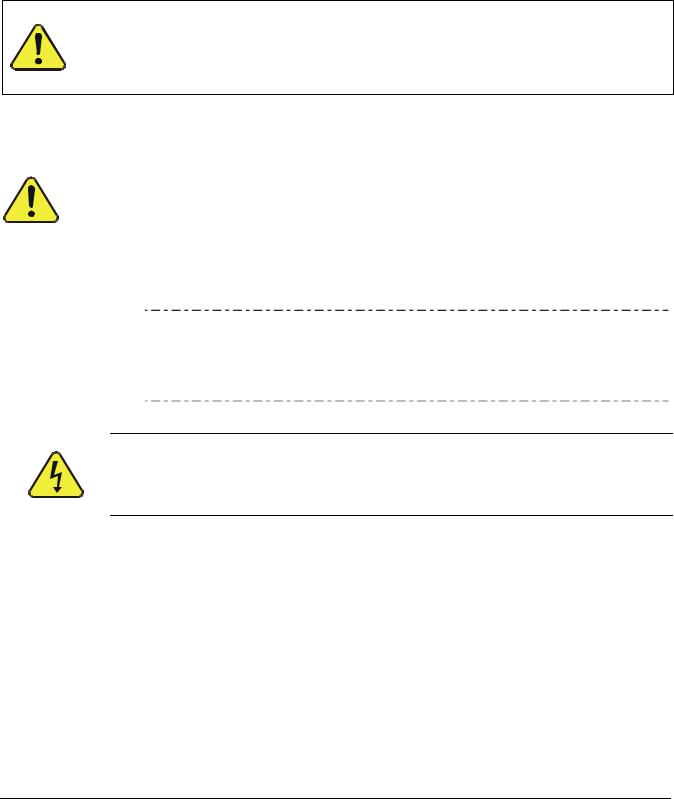
3. GETTING STARTED
3.1. UNPACKING AND INITIAL SETUP
CAUTION
THE T200H AND THE T200M EACH WEIGHS ABOUT 18 KG (40 POUNDS) WITHOUT OPTIONS INSTALLED. TO AVOID PERSONAL INJURY, WE RECOMMEND TO USE TWO PERSONS TO LIFT AND CARRY THE ANALYZER.
|
|
|
CAUTION – Avoid Warranty Invalidation |
||
|
|
Printed circuit assemblies (PCAs) are sensitive to electro-static discharges too small to be |
|||
|
|
felt by the human nervous system. Damage resulting from failure to use ESD protection |
|||
|
|
when working with electronic assemblies will void the instrument warranty. |
|||
|
|
See A Primer on Electro-Static Discharge section in this manual for more information on preventing |
|||
|
|
ESD damage. |
|||
|
|
|
|
|
|
|
Note |
|
It is recommended that you store shipping containers/materials for future |
||
|
|
|
use if/when the instrument should be returned to the factory for repair |
||
|
|
|
and/or calibration service. See Warranty section in this manual and |
||
|
|
|
shipping procedures on our Website at http://www.teledyne-api.com |
||
|
|
|
under Customer Support > Return Authorization. |
||
|
|
|
WARNING |
|
|
|
|
|
|
||
|
|
|
NEVER DISCONNECT ELECTRONIC CIRCUIT BOARDS, WIRING HARNESSES OR |
|
|
|
|
|
ELECTRONIC SUBASSEMBLIES WHILE THE UNIT IS UNDER POWER. |
|
|
|
|
|
|
|
|
1.Inspect the received packages for external shipping damage. If damaged, please advise the shipper first, then Teledyne API.
2.Included with your analyzer is a printed record of the final performance characterization performed on your instrument at the factory. This record, titled Final Test and Validation Data Sheet (P/N 04413) is an important quality assurance and calibration record for this instrument. It should be placed in the quality records file for this instrument.
3.Carefully remove the top cover of the analyzer and check for internal shipping damage, as follows:
a. Remove the set-screw located in the top, center of the front panel.
25

Getting Started |
Teledyne API - Model T200H/T200M Operation Manual |
b.Remove the 2 screws fastening the top cover to the unit (one per side towards the rear).
c.Slide the cover backwards until it clears the analyzer’s front bezel.
d.Lift the cover straight up.
4.Inspect the interior of the instrument to make sure all circuit boards and other components are in good shape and properly seated.
5.Check the connectors of the various internal wiring harnesses and pneumatic hoses to make sure they are firmly and properly seated.
6.Verify that all of the optional hardware ordered with the unit has been installed. These are checked on the paperwork (Form 04490) accompanying the analyzer.
3.2. VENTILATION CLEARANCE
Whether the analyzer is set up on a bench or installed into an instrument rack, be sure to leave sufficient ventilation clearance.
AREA |
MINIMUM REQUIRED CLEARANCE |
Back of the instrument |
10 cm / 4 inches |
Sides of the instrument |
2.5 cm / 1 inch |
Above and below the instrument. |
2.5 cm / 1 inch |
|
|
3.3. T200H/M LAYOUT
Figure 3-1 shows the front panel layout of the analyzer, and Figure 3-4 shows the rear panel with optional zero-air scrubber mounted to it and two optional fittings for the IZS option. Figure 3-5 shows a top-down view of the analyzer. This configuration includes the IZS option, zero-air scrubber and an additional sample dryer (briefly described in Section 1.4).
26
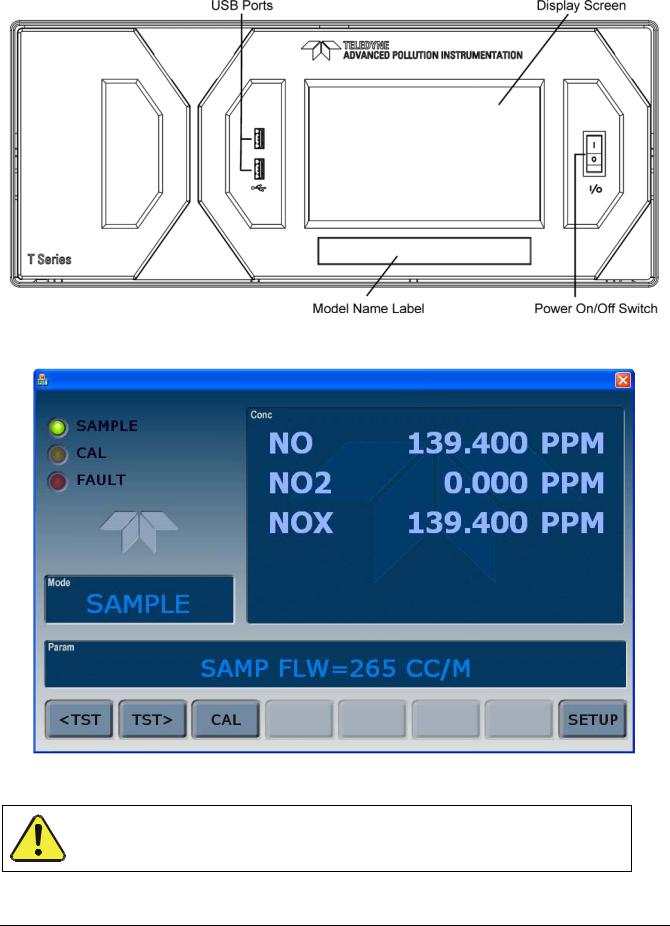
Teledyne API - Model T200H/T200M Operation Manual |
Getting Started |
Figure 3-1: |
Front Panel |
Figure 3-2: Display Screen and Touch Control
CAUTION – Avoid Damaging Touch screen
Do not use hard-surfaced instruments such as pens to operate the touch screen.
27

Getting Started |
Teledyne API - Model T200H/T200M Operation Manual |
The front panel liquid crystal display screen includes touch control. Upon analyzer startup, the screen shows a splash screen and other initialization indicators before the main display appears, similar to Figure 3-2 above (may or may not display a Fault alarm). The LEDs on the display screen indicate the Sample, Calibration and Fault states; also on the screen is the gas concentration field (Conc), which displays real-time readouts for the primary gas and for the secondary gas if installed. The display screen also shows what mode the analyzer is currently in, as well as messages and data (Param). Along the bottom of the screen is a row of touch control buttons; only those that are currently applicable will have a label. Table 3-1 provides detailed information for each component of the screen.
|
|
|
Table 3-1: |
Display Screen and Touch Control Description |
|
||
|
|
|
|
|
|
|
|
|
Field |
|
|
|
|
Description/Function |
|
|
Status |
|
LEDs indicating the states of Sample, Calibration and Fault, as follows: |
|
|||
|
|
|
Name |
Color |
State |
Definition |
|
|
|
|
|
|
Off |
Unit is not operating in sample mode, DAS is disabled. |
|
|
|
|
SAMPLE |
Green |
On |
Sample Mode active; Front Panel Display being updated; DAS data |
|
|
|
|
|
being stored. |
|
||
|
|
|
|
|
Blinking |
Unit is operating in sample mode, front panel display being updated, |
|
|
|
|
|
|
|
DAS hold-off mode is ON, DAS disabled |
|
|
|
|
|
|
Off |
Auto Cal disabled |
|
|
|
|
CAL |
Yellow |
On |
Auto Cal enabled |
|
|
|
|
|
|
Blinking |
Unit is in calibration mode |
|
|
|
|
FAULT |
Red |
Off |
No warnings exist |
|
|
|
|
Blinking |
Warnings exist |
|
||
|
|
|
|
|
|
||
|
Conc |
|
Displays the actual concentration of the sample gas currently being measured by the analyzer in the |
|
|||
|
|
currently selected units of measure |
|
||||
|
|
|
|
||||
|
Mode |
|
Displays the name of the analyzer’s current operating mode |
|
|||
|
Param |
|
Displays a variety of informational messages such as warning messages, operational data, test function |
|
|||
|
|
values and response messages during interactive tasks. |
|
||||
|
|
|
|
||||
|
Control Buttons |
|
Displays dynamic, context sensitive labels on each button, which is blank when inactive until applicable. |
|
|||
Figure 3-3 shows how the front panel display is mapped to the menu charts illustrated in this manual. The Mode, Param (parameters), and Conc (gas concentration) fields in the display screen are represented across the top row of each menu chart. The eight touch control buttons along the bottom of the display screen are represented in the bottom row of each menu chart.
28
